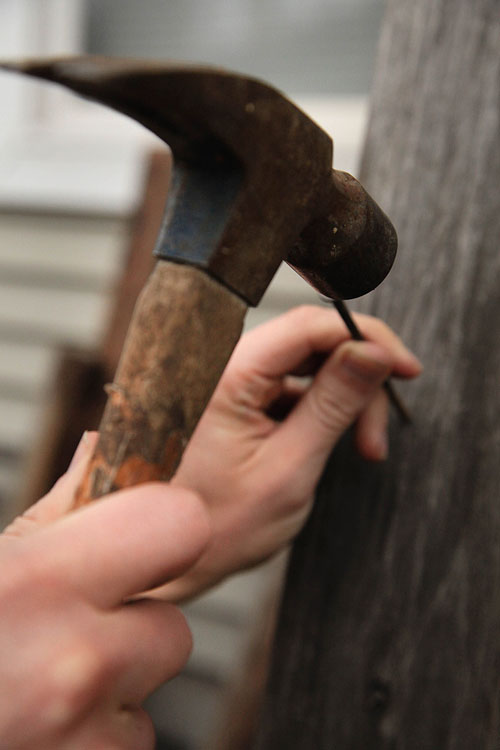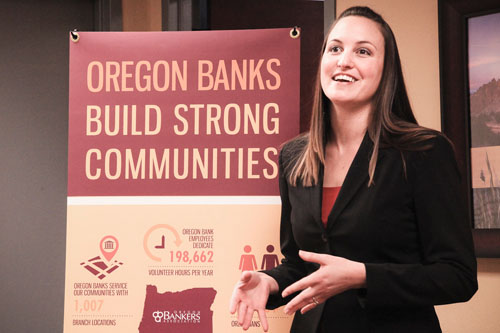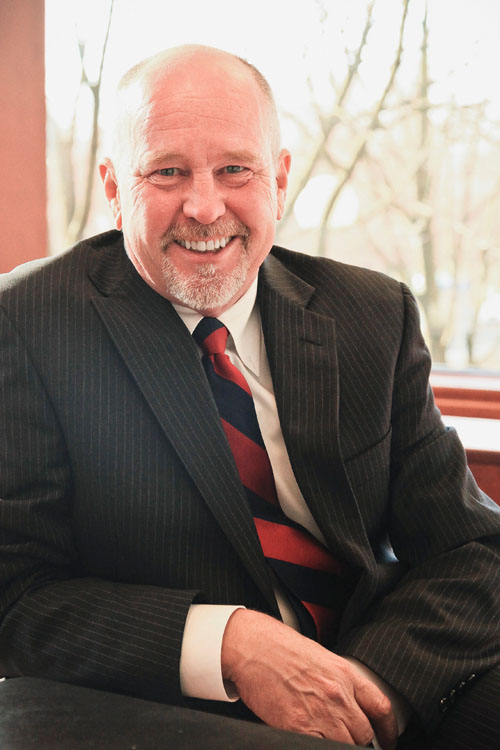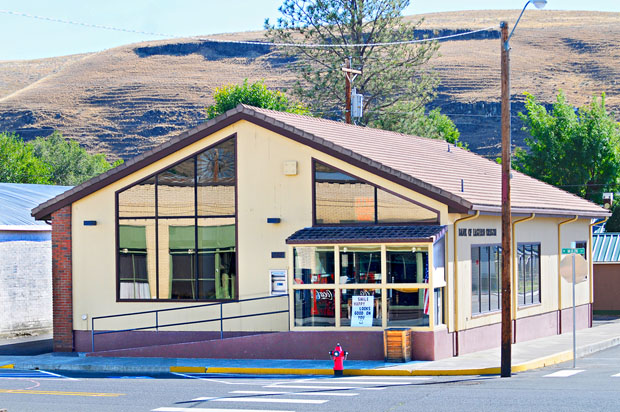BY ERIN J. BERNARD
A new report highlights how Oregon bankers are giving back to their communities.
BY ERIN J. BERNARD
A new report highlights how Oregon bankers are giving back to their communities
Oregon bankers donate almost |
Want to check up on the health of a community? Take a look at its banks. If one’s growing and thriving, then the other probably is too.
It’s an interdependent relationship that benefits banks and community members alike, says Oregon Bankers Association president and CEO Linda Navarro: “You want to grow a healthy community so you have a healthy economy as well.”
How does a bank grow a healthy community? With a little education, a lot of innovation and a whole legion of helping hands.
In its recently released report, “Oregon’s Banks: Cornerstones of Our Communities,” OBA spotlights the many ways the state’s 18,700 bankers are building vital economic and social relationships across Oregon.
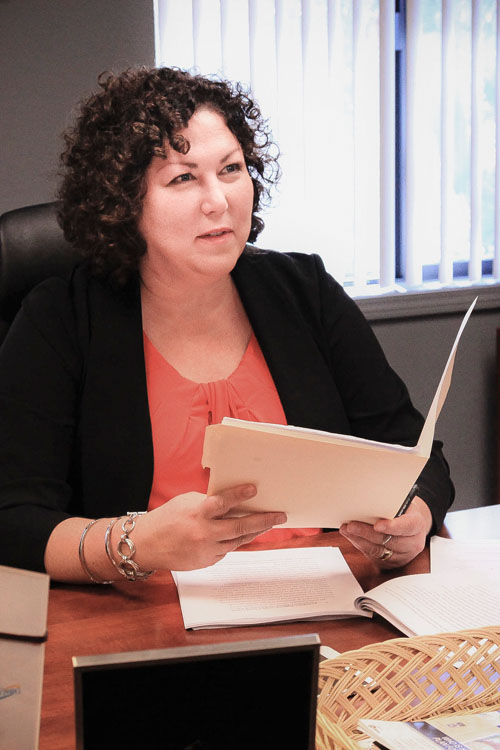 OBA President and CEO Linda Navarro |
OBA marketing and |
OBA chair and Umpqua Bank |
There are about 50 banks doing business at 1,007 branches in Oregon, according to the report, with half of those headquartered right here in the state. OBA’s member banks come in all sizes, from large commercial banks to smaller savings banks serving just one or two towns. And they all share a few things in common: they accept deposits, they keep money safe, and behind each is a cadre of bankers with a deep stake in the surrounding community.
The “Cornerstones” report notes that Oregon banks donate $19.8 million a year to nonprofits and community sponsorships while bank employees log nearly 200,000 volunteer hours annually.
These numbers are proof positive of the banking community’s genuine investment in its customers, says OBA Chair and Umpqua Bank executive vice president Steve Rice: “Our commitment to the community isn’t just something we put on a billboard.”
From pounding nails to teaching financial literacy to backing ambitious non-profit endeavors, the report highlights the creative philanthropic efforts bankers are undertaking to demonstrate their passion for empowering and enhancing the communities they work in.
“Banks aren’t just places for your deposits,” points out OBA marketing and communications Director Andee Rose. “There’s a lot more going on behind the scenes.”
Case in point: a group of female bankers from Premier Community Bank nicknamed themselves “The Hammering Heidis” and spent their lunch hours producing craft items to fundraise for Willamette West Habitat for Humanity’s All Women’s Build Day. Then they took up tool belts and pitched in a little sweat equity right at the job site.
A healthy community also requires healthy food, and banks can help there, too. In 2013 Evergreen Federal Bank teamed with the Josephine County Food Bank to expand the Grants Pass Raptor Creek Farm project, which includes a garden, distributing and processing facilities, pantry and farm kitchen. Now residents have access to a steady supply of locally sourced produce.
Oregon’s bankers also support the long-term goals of community members through loans and grants. Large banks offer broad-based services, while community banks often specialize in small business lending.
These loans are essential in a place like Oregon, says Navarro, where small business employs more than half of the private workforce: “Each loan to a business in Oregon creates jobs and allows the business to expand. It might allow the business to construct a new building or hire people to run a new manufacturing line.”
Banks also cultivate cyclical relationships with agricultural communities across the state. In the process of making annual agriculture-related loans to the tune of $213 million, loan officers in Oregon’s rural areas might well visit multiple farming family homes, sitting down right at the farmhouse kitchen table to help put together a budget that will support the farm through harvest season, says Rice.
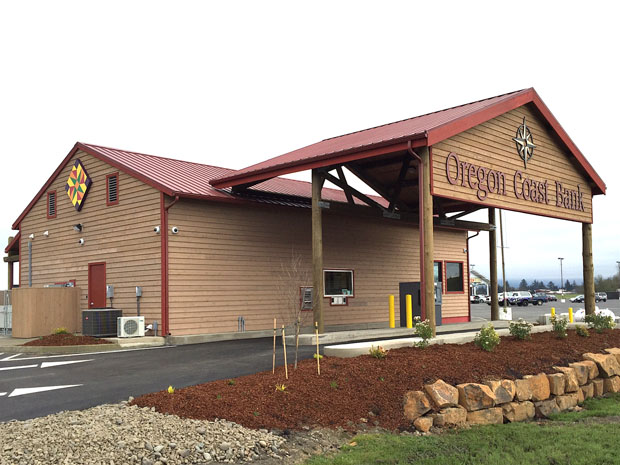
This branch of Oregon Coast Bank recently opened in Tillamook.
If you want to ensure a community’s health even further into the future, you’ve got to build more than food bank gardens and farming budgets; you’ve got to build money-wise consumers, starting early.
Bank of Eastern Oregon’s Ione branch |
Oregon bankers preach the gospel of good money habits in schools by providing financial education lessons in classrooms and sponsoring financial education programs. In 2013-2014, First Federal’s financial literacy training program in Yamhill County produced more than 500 “financial scholars” — young adults versed in everything from stocks and mortgages to higher-education financing.
When a community is populated with smart, savvy consumers, says Navarro, everybody wins: “Hopefully, an educated young person can turn into a contributor to the economy in other ways. Maybe they’ll become the next startup business in town!”
Oregon’s banks promote community |
And whether it’s a startup business or a family farm, a food bank expansion or a Habitat home build, Oregon’s bankers support the endeavors of the communities surrounding them for a simple reason: these are their communities too.
That’s why people love their local banks, says Rice: “They know they can walk through the door and talk to a real person who lives and breathes that community.”
“Bankers are Oregonians,” adds Navarro. “They’re people who care deeply about the success of their communities and their customers.”

